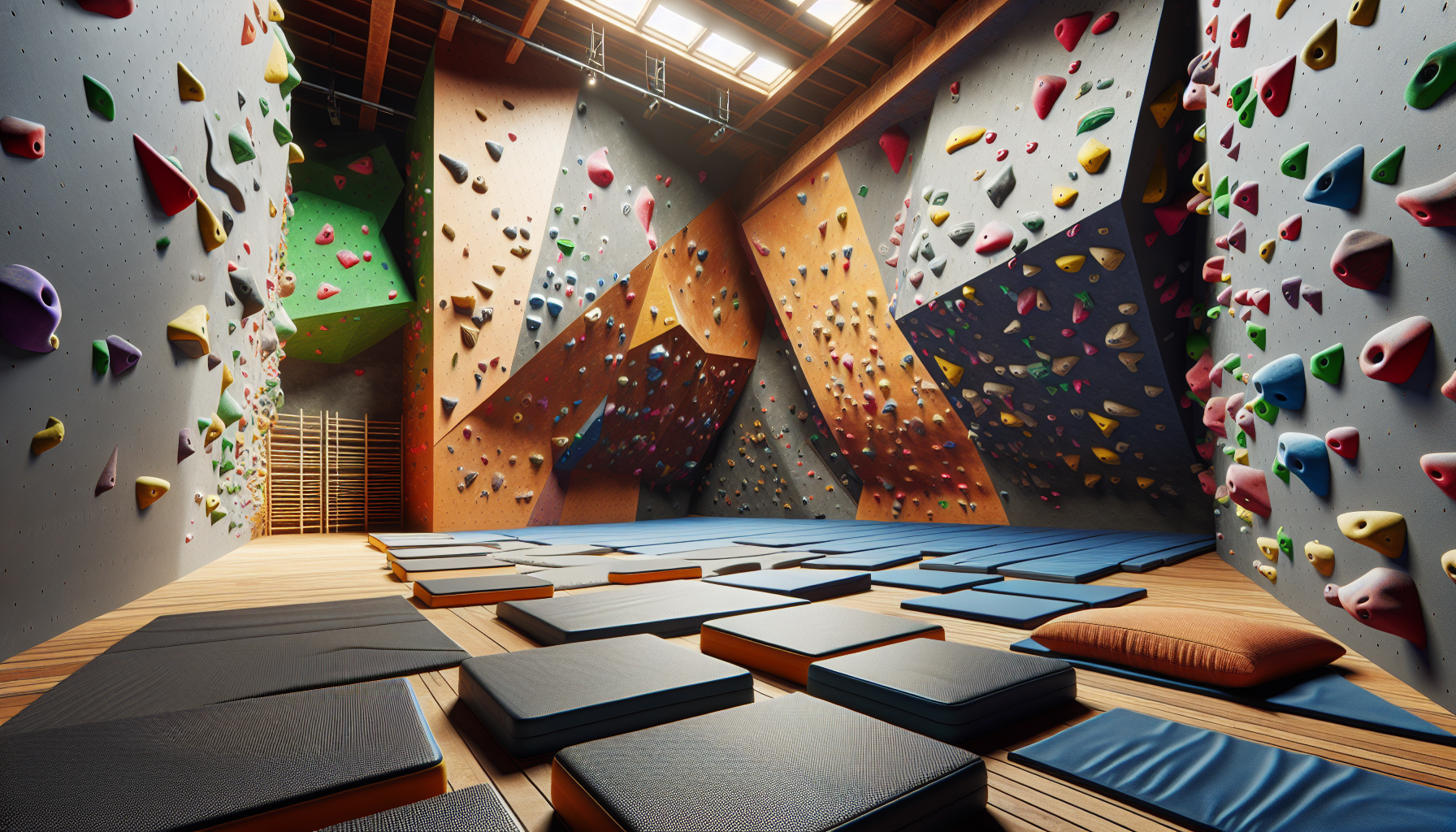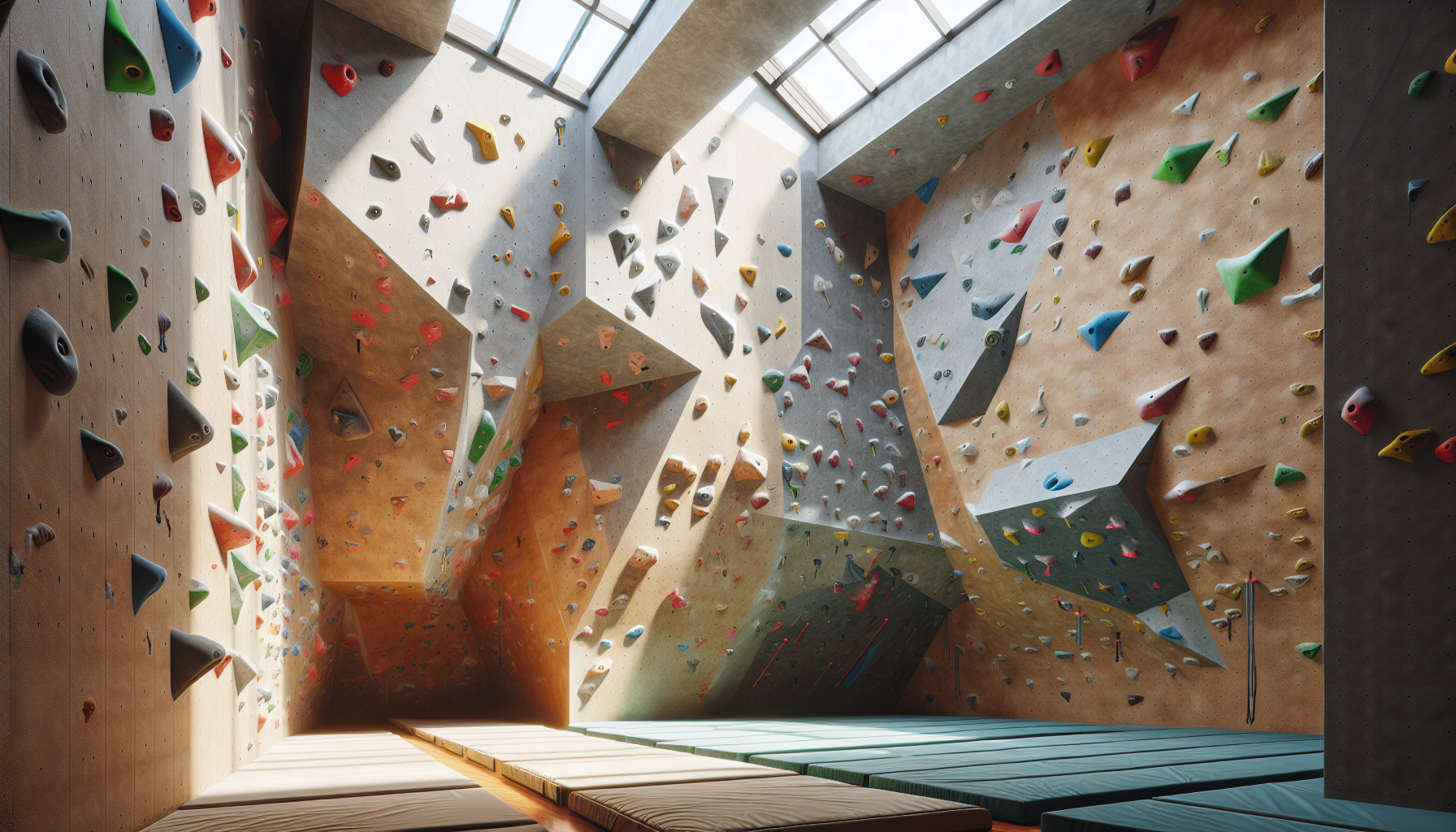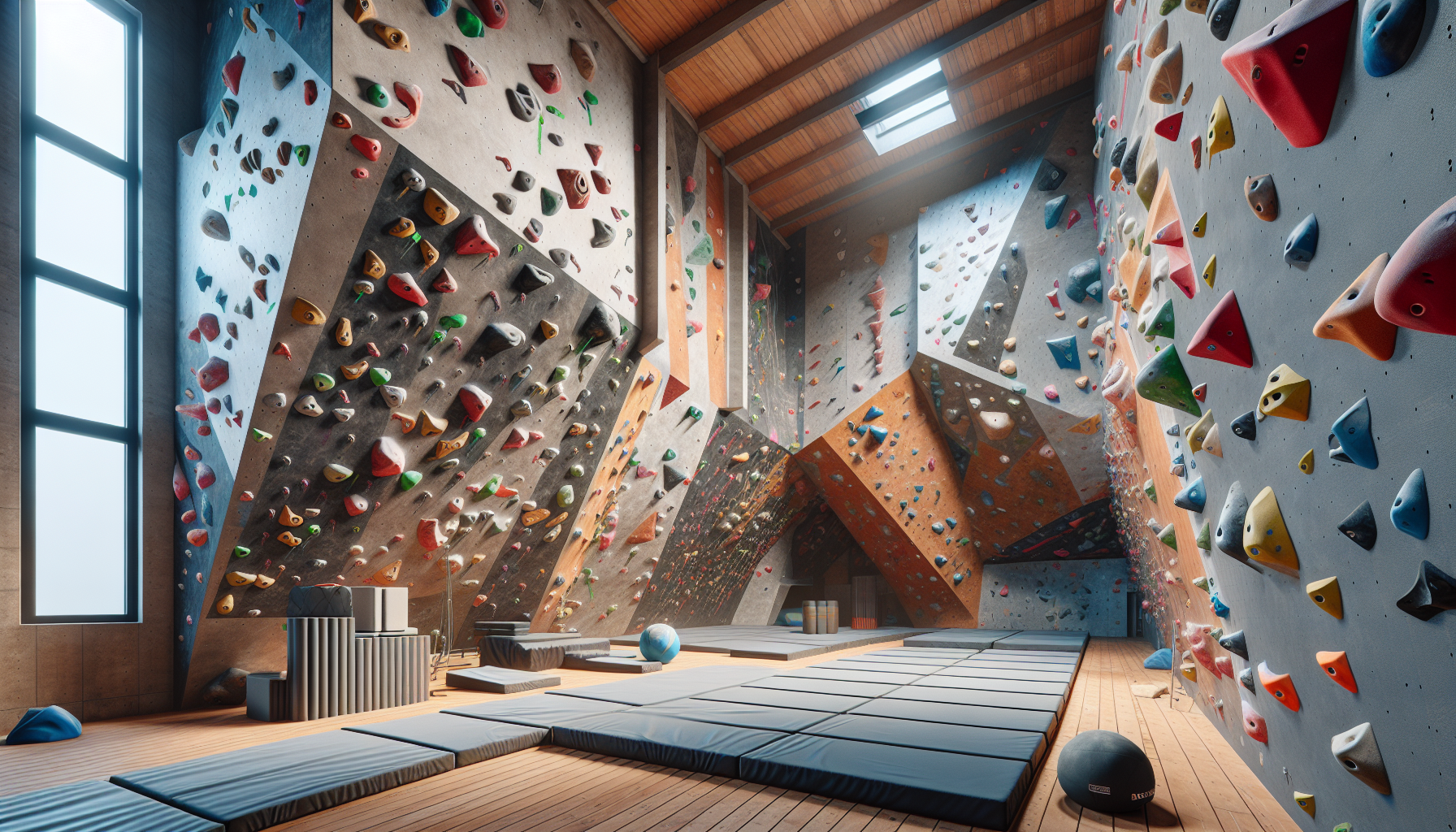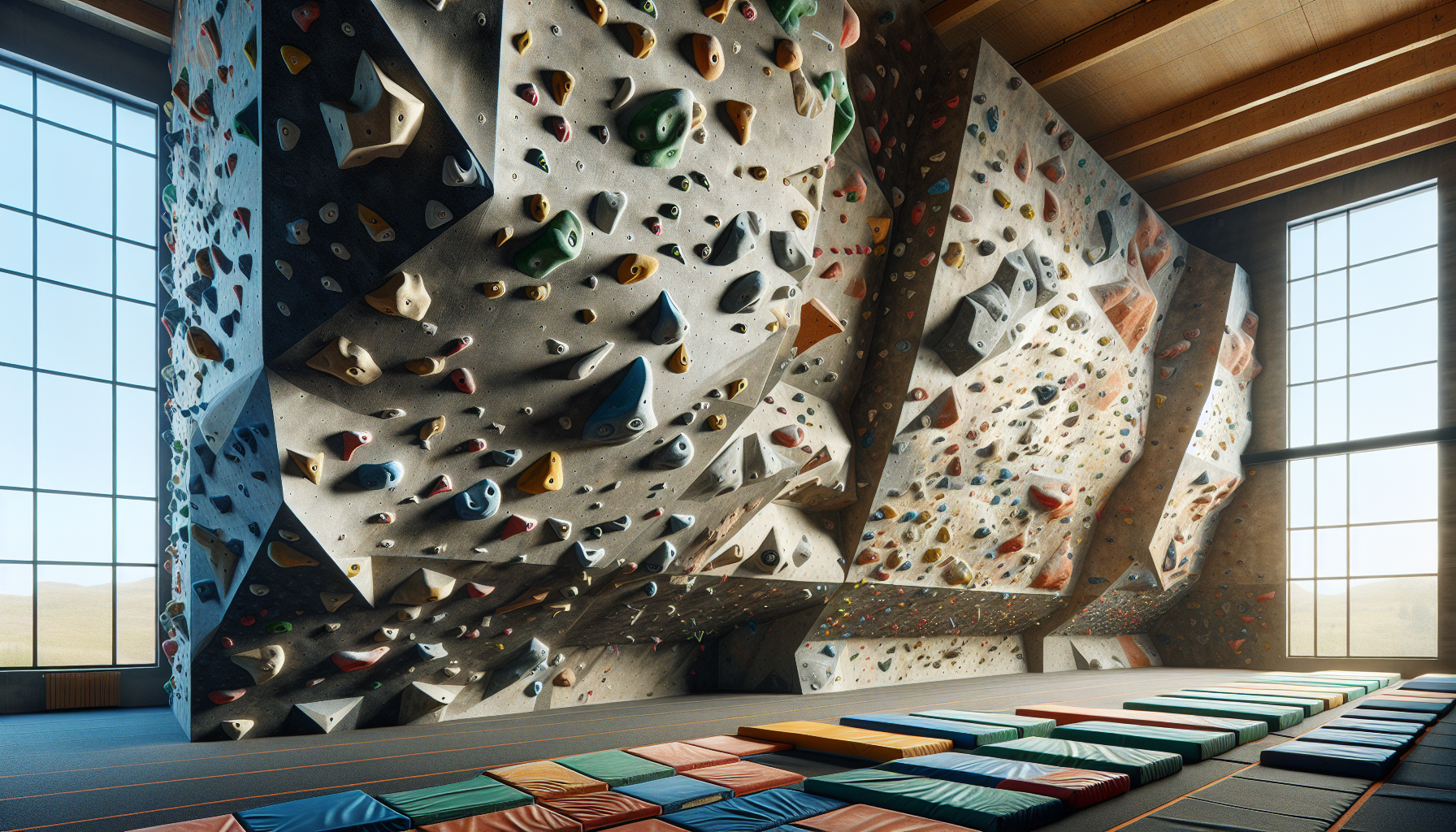
Exploring vertical challenges in a controlled environment can be an exhilarating way to enhance physical fitness and mental resilience. Mastering bouldering techniques is essential for those new to this adventurous pursuit.
Unlike traditional climbing, which often involves long ascents, this practice focuses on shorter walls that allow climbers to engage directly with their surroundings.
Emphasizing proper foot placement and body alignment can lead to significant progress in skill and confidence.
Utilizing essential gear, such as crash pads, ensures safety during practice and allows climbers to push their limits. With dedicated training, beginners can swiftly improve their abilities, discovering a variety of challenging climbing holds.
Connecting with a vibrant community helps in sharing tips and resources, fostering steady advancement on the indoor climbing journey.
Understanding Bouldering Techniques
Mastering the art of climbing involves understanding various skills and techniques that enhance overall performance. Effective body positioning plays a pivotal role in maintaining balance on challenging routes.
By ensuring correct alignment, you can achieve optimal foot placements that contribute to stability.
Engaging your core muscles is equally important, as it facilitates better alignment for smoother movements.
Fluidity in movement is crucial in the climbing world, allowing for seamless transitions between different sequences.
Practicing techniques that promote this fluid motion can greatly improve your abilities. Climbing facilities often offer specific problems designed to enhance traversing skills, enabling climbers to navigate routes more efficiently while building grip endurance.

Building Grip Endurance
To excel in climbing, it is crucial to enhance the ability to sustain holds over time. Stamina development plays a significant role, enabling climbers to better endure challenging routes.
Engaging in various grip types, such as open hand and closed grip, is essential for optimizing performance.
Each grip style focuses on different muscle groups, which can improve overall strength and endurance during ascents.
Incorporating targeted exercises like dead hangs and fingerboard training helps build the necessary power and resistance for climbs.
Effective chalk use can minimize moisture on the hands, ensuring a more secure grip. Consistent practice, combined with effective training methods, can lead to impressive progress and better climbing results
Climbing Performance
- Developing stamina is essential for enduring challenging climbing routes.
- Different grip styles, such as open hand and closed grip, target various muscle groups.
- Targeted exercises like dead hangs and fingerboard training enhance grip strength and endurance.
- Effective use of chalk reduces moisture, improving grip security during climbs.
Importance of Foot Placement
In climbing, the way a climber positions their feet can significantly impact their ability to ascend safely and effectively. Proper placement not only enhances balance but also contributes to control on varying types of holds, such as slopers and jugs.
When individuals set their feet well, they are able to maintain stability, which reduces the likelihood of falls.
This balance plays a crucial role in managing a climber’s center of gravity, allowing for efficient weight distribution.
Smooth movements are facilitated by these techniques, ultimately improving overall climbing performance. To enhance control on different surfaces, practicing footwork is essential.
Repeated drills can prevent common mistakes, advancing not just physical capabilities but also belaying skills and techniques essential for peer climbing.
Basic Safety Practices
Engaging in outdoor activities can be exhilarating, but it is essential to be mindful of the associated dangers. Statistically, over 30% of climbers experience injuries, mainly from falls.
Utilizing effective crash pads serves as a crucial safety measure, cushioning landings and protecting climbers during their adventures.
Investing in the right climbing footwear not only enhances grip but also improves control, drastically reducing the chance of slips.
Properly positioning crash pads ensures coverage of potential impact zones. Spotting is another vital practice that significantly lowers fall risks, as it guarantees a safe landing area for the climber.
Maintaining effective communication between the climber and the spotter is imperative for successful bouldering experiences. Staying aware of the climbing environment aids in avoiding hazards like loose rocks, while conditioning exercises help prepare the body for the physical demands of the sport.
Choosing Climbing Footwear
Finding the ideal footwear is essential for enhancing your experience while tackling rock challenges. A proper fit can significantly influence comfort and climbing performance, ultimately shaping your success on the vertical face.
Shoes that feel secure yet comfortable offer numerous advantages; they must embrace your feet snugly but not constrictively, as discomfort can thwart even the most skilled climbers’ effectiveness.
Understanding your foot shape can lead to properly selecting a shoe that minimizes dead space around the toes and ensures a strong heel hold.
Different climbing scenarios demand varied footwear styles, making it important to recognize the distinctions among various types.
Neutral, aggressive, and moderate designs serve unique purposes for activities like bouldering or sport climbing, thus influencing performance evaluation. The choice between leather and synthetic materials can have a noticeable impact on flexibility and durability within the climbing community.
The stiffness of your shoes dictates technique execution, while the rubber used determines grip and longevity under varied conditions.
Yet, selecting between Velcro or laced closures also plays a crucial role in usability. Reaching out to your climbing partners for recommendations may yield helpful insights that refine your choice.
It’s imperative to test potential shoes adequately.
Wearing appropriate socks and evaluating comfort on different surfaces will help ensure optimal performance.
Taking the time to break in your new gear with empathy in climbing will pay off through enhanced longevity and rugged performance on the rock.
Navigating Indoor Climbing Facilities
Discovering the intricacies of indoor climbing can significantly boost your enjoyment and proficiency. Most facilities showcase a variety of climbing surfaces, including bouldering walls, top-rope zones, and dedicated lead sections that cater to different skill levels.
Understanding these gym routes is essential for selecting appropriate challenges that match your capabilities.
By familiarizing yourself with grading systems, you can gain valuable insight into the difficulty of each route, enabling better decision-making for your ascents.
Utilizing chalk bags not only enhances grip but also adds comfort during climbs. Engaging in mobility drills and friction drills is beneficial for honing your technique, allowing for greater agility and control.
Participating in coaching classes can provide tailored guidance, helping you maximize available resources and elevate your performance.
Indoor Climbing
- Indoor climbing facilities typically feature a range of surfaces like bouldering walls and top-rope zones, allowing climbers to practice various techniques.
- Grading systems in climbing help climbers understand the difficulty level of routes and select challenges that match their skill level.
- Using chalk can improve grip and comfort, which is essential for successful ascents and enhanced performance.
- Mobility and friction drills contribute to improved climbing technique, increasing a climber’s agility and control on the wall.
Developing Mental Preparation
Success in climbing often hinges on an individual’s mental approach. Establishing a pre-climb routine, for instance, can help enhance focus and clarity, acting like layering techniques that support performance.
Setting clear, achievable goals fosters motivation and provides a roadmap for each climb.
Integrating mindfulness techniques such as deep breathing can effectively reduce climber fatigue and alleviate anxiety.
Visualizing routes plays a crucial role; many climbers find that imagining their ascent allows for improved planning and a greater ability to anticipate challenges. This mental rehearsal prepares them for obstacles and facilitates smoother navigation.
Acknowledging fears is vital; employing strategies like positive self-talk helps shift focus and build the confidence needed to overcome psychological barriers.
Understanding Route Design
Crafting an engaging climbing experience involves a meticulous process that considers various elements to enhance the challenge. Effective route setters must thoughtfully balance exercises, taking into account factors such as hold types and climbing sequences.
A strong understanding of different holds, including crimps and slopers, is essential, as these significantly affect difficulty and technique practice.
Sequencing is vital for creating moves that cater to all skill levels while promoting safety.
Planners focus on fall zones and injury prevention to maintain climbers’ well-being.
By incorporating climber feedback, continuous improvement is achieved, fostering community involvement and ensuring goal accomplishment through thoughtful planning and execution.
- A thorough understanding of various hold types, such as crimps and slopers, is crucial for setting appropriate climbing difficulties.
- Effective route setting incorporates climber feedback to ensure continuous improvement and community engagement.
- Fall zones and injury prevention are key considerations in planning climbing routes to promote safety.
- Sequencing moves allows for challenges that accommodate climbers of all skill levels, enhancing the overall experience.





